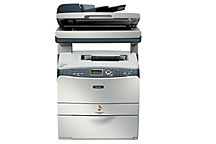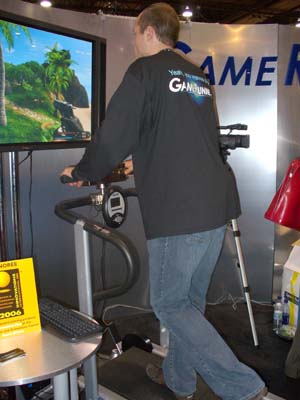Choosing a notebook PC: Disks, Video, and Memory
Continuing our series on choosing a notebook PC, today I’ll take a look at three more major notebook features: disk drives, video cards, and memory.
While these are relatively minor considerations when you buy a desktop machine—you can always upgrade them later—notebooks are harder to upgrade, so it’s worth taking a moment to consider what you need and buy it up front if possible.
Disk Drives
The most obvious consideration when choosing a disk drive is size, and the larger the better—especially if you’ll be working with digital photos or video, or storing a library of MP3s on the machine. Today’s top models have disk sizes ranging from 40GB to 100GB. If you order online, you can usually choose the disk size, but if you buy your notebook locally you’re stuck with the stock choice. Make sure it’s something you can live with.
In general, for strictly business use—no video or music—40GB is plenty. But if your notebook will double as a desktop music or video player, get the biggest drive you can afford.
All but the largest notebooks have room for only one disk drive. While it is possible to upgrade the drive, it requires reinstalling the operating system—not always an easy task with notebooks, since you have to track down drivers for all of their components. Also, since laptop disk drives are smaller and less in demand, you usually save money by buying the drive with the notebook.
Another variable is disk drive speed. Most notebook drives are 5400 RPM, a bit slower than the 7200 RPM drives that are available on desktops. Some ultra-small notebooks will have 4200 RPM or slower drives, but since the slower drives use less battery, it might be worthwhile to live without the highest speed. Unless you’re using the machine for video editing or music production, drive speed probably won’t affect your experience.
Video
On a desktop PC, you can upgrade the video card if you need more performance. While there are some standards for notebooks to support video upgrades, almost no machines support them, so you should buy the machine with the video support you need.
For PC notebooks, there are usually two video choices. The cheapest is “Integrated video,†also known as “Intel Graphics Media Acceleratorâ€â€”this is the video chipset packaged with Intel’s Centrino chipset. It usually shares the system RAM rather than having its own video memory. It works for business use and can play a DVD just fine, but isn’t very fast for anything video-intensive—games in particular.
If you plan on doing lots of gaming or video editing, look for a machine with a separate nVidia or ATI video card and dedicated video RAM. You’ll also want to read reviews and benchmarks for each model if you need lots of video performance. Some customizable laptops offer both choices, others have only one video option.
Memory
One last factor that will have a major effect on your notebook’s performance is the amount of RAM memory. For Windows, I recommend a minimum of 1 GB unless you’ll only be running the simplest software. For Mac OS X, 512 MB is workable, but 1 GB is faster.
Memory is one area where you may be able to save $100 or more by upgrading it yourself. You can add memory to most notebooks by removing a few screws and inserting a chip. If you’re buying a customized PC, check Crucial.com and compare their price for a memory upgrade to the manufacturer’s price when you buy the notebook. If the price is significantly lower, you might want to buy the (almost crippled) 256 MB model and put in a new chip. (You can buy memory at many online sources, but Crucial is a good place to start because their site can tell you which type the notebook needs.)
Most notebooks have two memory slots. If you buy a machine with 512 MB or 1 GB of RAM, be warned that the stock memory might be divided between two chips, making an upgrade difficult. For example, if a 1 GB notebook has two 512 MB chips and you buy a new 1 GB chip, the maximum memory will be 1.5 GB, since you’ll have to remove one of the existing chips to add the new one.
Almost done! In the next installment I’ll look at connectivity options for notebooks—WiFi, Bluetooth, USB, and so on.
Previously:
 Nothing says I love you like a gadget, right?
Nothing says I love you like a gadget, right? We saw this color laser printer at the Epson booth. It was the last day of the convention and we were tired, but the lady at the Epson booth was eager to show us all of its capabilities. The printer was very reasonably priced at $799, but I wanted to know the cost of maintenance. She had all the information for us:
We saw this color laser printer at the Epson booth. It was the last day of the convention and we were tired, but the lady at the Epson booth was eager to show us all of its capabilities. The printer was very reasonably priced at $799, but I wanted to know the cost of maintenance. She had all the information for us:
